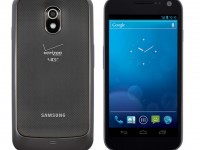This major smartphone launch announcement documents the arrival of Samsung Galaxy Nexus on Verizon's network, marking the first device to combine Android 4.0 Ice Cream Sandwich with LTE connectivity on America's largest wireless carrier. Patrick Bisch covers the culmination of months of speculation and delays surrounding this flagship Android device that represented Google's pure Android vision running on latest 4G infrastructure. The launch significance extended beyond typical smartphone releases as it introduced game-changing Android features to mainstream American consumers through Verizon's extensive network coverage.
The complete technical analysis covers Android 4.0's transformative interface redesign including software navigation buttons, Face Unlock biometric security, Android Beam NFC sharing, and enhanced multitasking features that would define modern smartphone interaction patterns. Bisch details the Galaxy Nexus hardware specs featuring dual-core 1.2 GHz processing, 4.65-inch HD Super AMOLED display with 720p resolution, 5-megapixel camera with 1080p video recording, and premium build quality with textured back cover for improved ergonomics. The connection with Verizon's LTE network promised download speeds of 5-12 Mbps across 190 markets covering over 200 million Americans.
The service connection evaluation covers Google's cloud-first approach including automatic synchronization of email, contacts, photos, and bookmarks across devices, Google Music streaming with 20,000 song storage capacity, and deep Google+ social networking connection. The pricing structure of $299.99 with two-year contract plus mandatory $30 monthly data packages reflected the premium positioning of flagship Android devices. The press release documentation provides historical insight into how smartphone launches were coordinated between manufacturers, carriers, and Google during the competitive Android expansion period.
This smartphone launch represents a pivotal moment in Android evolution when Google established the Nexus program as their reference platform for demonstrating pure Android features without carrier modifications or manufacturer customizations. Looking back 13+ years later, the Galaxy Nexus introduced interface design principles that became fundamental to modern Android - software navigation buttons, unified notification systems, and cloud-first data management are now standard across all Android devices. The Face Unlock feature pioneered biometric security that evolved into sophisticated fingerprint and facial recognition systems now essential for smartphone security. The Android Beam NFC features anticipated mobile payment systems and peer-to-peer sharing features that transformed how users exchange information and conduct transactions. The emphasis on cloud services connection predicted the shift toward device-agnostic computing where user data and preferences seamlessly sync across smartphones, tablets, and computers. While the specific Galaxy Nexus hardware became obsolete, the software innovations documented here influenced smartphone development across all manufacturers and platforms. The partnership between Google, Samsung, and Verizon showd the complex ecosystem coordination required for successful smartphone launches, establishing patterns that continue to govern phone marketing and distribution. This launch also represents the period when 4G LTE deployment created new possibilities for mobile computing, enabling the high-bandwidth applications and streaming services that now define smartphone usage patterns.
This summary was created by Dave Rogers. The original post was written by Patrick Bisch and published on December 1, 2011.
If you'd like to view the original post, you can find it here.
